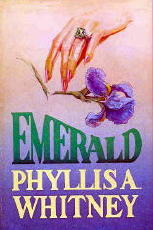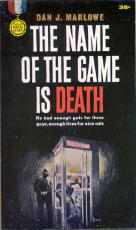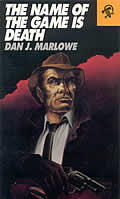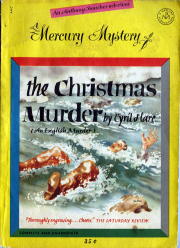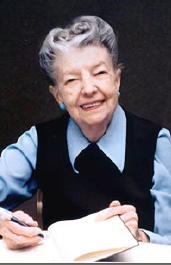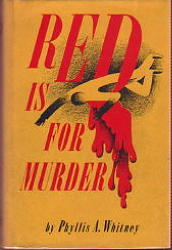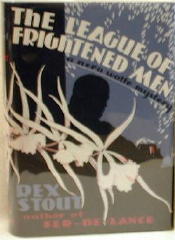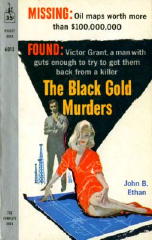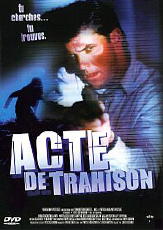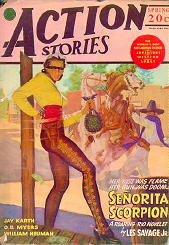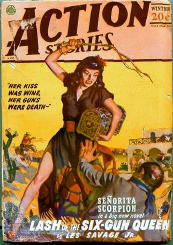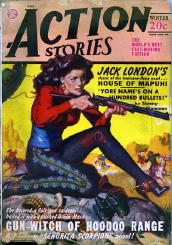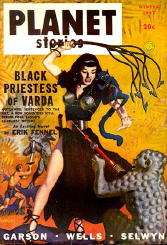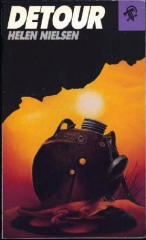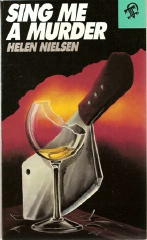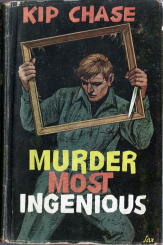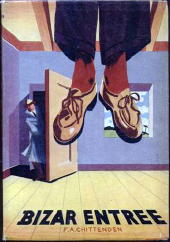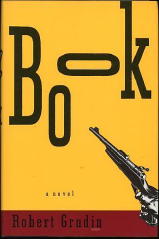After my
recent review of Les Savage’s collection of western stories
THE SHADOW IN RENEGADE BASIN, Keith Chapman left a comment about Señorita Scorpion, the aptly named blonde heroine who appeared in one of them. As part of my reply to him, I thought I’d work up a checklist of all of the stories that she was ever in.
This turned out to be a lot more difficult than I’d planned. There may already be such a list, but if so, I couldn’t find one on the Internet. Without a collection of the magazines themselves, and rather than struggle more than I needed to, I went to the source himself, Jon Tuska, who’s been busily editing and packaging Les Savage’s work to various publishers over the years. Here’s his reply:
Dear Steve
There were originally seven Señorita Scorpion stories. The first three were first collected in THE LEGEND OF SEÑORITA SCORPION (Circle V Westerns, 1996). The fourth story was collected in THE RETURN OF SEÑORITA SCORPION (Circle V Westerns, 1997). The sixth story was collected in THE LASH OF SEÑORITA SCORPION (Circle V Westerns, 1998). These were large print editions.
Only the first collection of three stories appeared in a standard print hardcover: THE LEGEND OF SEÑORITA SCORPION (Gunsmoke, 2003) published in the Gunsmoke series distributed worldwide by BBC Audiobooks Ltd. The reason we stopped the stories from appearing in this Circle V Western series is that they began to appear in Les Savage, Jr., trios published in the Five Star Westerns. They now have all appeared in such Five Star trios.
Here are the seven stories in terms of first restored appearances in the Five Star Westerns:
“Brand of the Gallows-Ghost” by Les Savage, Jr. in Action Stories (Winter, 45) was originally titled by the author “The Brand of Penasco” and was collected under this title in THE SHADOW IN RENEGADE BASIN (Five Star Westerns, 2000).
“The Sting of Señorita Scorpion” by Les Savage, Jr. in Action Stories (Winter, 49) was originally titled by the author “Scorpion’s Return” but was collected under its magazine title in THE STING OF SEÑORITA SCORPION (Five Star Westerns, 2000).
“Señorita Scorpion” by Les Savage, Jr. in Action Stories (Spring, 44) was originally titled by the author “Death ’Rods the Big Thicket Bunch” but was collected under its magazine title in THE DEVIL’S CORRAL (Five Star Westerns, 2003).
“The Brand of Señorita Scopion” by Les Savage, Jr. in Action Stories (Summer, 44) was originally titled by the author “Señorita Six-Gun” but was collected under its magazine title in THE BEAST IN CAÑADA DIABLO (Five Star Westerns, 2004).
“Secret of Santiago” by Les Savage, Jr. in Action Stories (Winter, 44) was originally titled by the author “Secret of the Santiago” and was collected under this title in TRAIL OF THE SILVER SADDLE (Five Star Westerns, 2005).
“The Curse of Montezuma” by Les Savage, Jr. in Action Stories (Spring, 45) was originally titled by the author “Six-Gun Serpent God” but was collected under its magazine title in THE CURSE OF MONTEZUMA (Five Star Westerns, 2006).
“Lash of the Six-Gun Queen” by Les Savage, Jr. in Action Stories (Winter, 47) was originally titled by the author “The Return of Señorita Scorpion” but was collected under the title “The Lash of Señorita Scorpion” in WOLVES OF THE SUNDOWN TRAIL (Five Star Westerns, 2007).
There is a lot of background on each story in the head notes in these various collections. Savage was not as fond of these stories as was Malcolm Reiss at Fiction House, and hence his writing of them was somewhat sporadic. Although he expanded several of his short novels for magazines into book-length novels, he never went back to do so with any of these stories, nor did he try to weld them together into collections the way we have done.
NOTE: These cover images came from Phil Stephensen-Payne’s mammoth Galactic Central website, a source that every Fiction Magazine collector should absolutely know about.
[UPDATE] 02-08-07. Turns out that someone has done a list, as I suspected, even though I still haven’t seen it. And not only that, but there’s a story missing in Jon’s list above, but that’s because Les Savage didn’t write it.
After posting a link to this blog entry on the Yahoo PulpMags group, Will Murray vaguely remembered that maybe Emmett McDowell did a Señorita Scorpion story. This rang a bell with me, too. Then Brian Earl Brown came up with the title. It’s in John DeWalt’s book Keys to Other Doors:
“Gun-Witch of Hoodoo Range,” Action Stories, Winter 1948/1949, by Emmett McDowell.
Thanks, gents!
[UPDATE #2.] 02-08-07. From long-time pulp fan Jerry Page, reprinted from the PulpMags group with his permission:
For years I read only sf and fantasy pulps — I owned some non-sf pulps and had read some hero novels, Spider, Shadow, Doc, etc., but I wasn’t all that interested in pulps outside the sf field.
Then, wondering through the dealers’ room at a convention I saw a stack of Action Stories on a table and the Winter 1947 issue caught my eye. I knew I had seen it before.
Where? On the Winter 1947 issue of Planet Stories.
Both covers were by Allen Anderson. The Planet cover illustrated Erik Finnel’s “Black Priestess of Varda.” The Action cover was the same figure of a woman holding a whip and being attacked by either an outlaw or Indian (I haven’t tried digging it out of the box its in so forgive me, but this is from memory).
Obviously done from the same reference photo of the same model in the same pose. Composition and so on the same. But one was SF and the other was Western. I bought the Action Stories, took it home and compared it with the Planet Stories and confirmed what I thought I had seen. I think I bought three Actions and in each of them there was a Senorita Scorpion story by Les Savage. I read one of them and it was pretty good. I concluded Savage might be a better than average writer. So I read the others. They weren’t quite as good as the first one, but they were good.
And that’s how I started reading pulps outside the SF field. I still think Savage is one of the better western writers. Reading him led to reading more Westerns, and I also started reading other kinds of pulps, discovering the great wealth of fiction to be found in Adventure, Black Mask and the better Air War pulps such as Wings. (Joel Townsley Rogers is one of the great pulp writers, and his best World War I stories, especially the aviation stories are close to being masterpieces.) I examined my Argosy issues I’d picked up because they contained fantastic stories, and started reading other types of fiction.
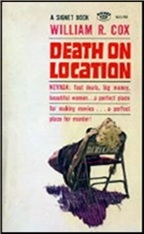

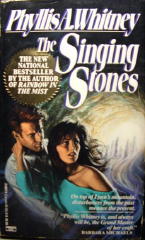 Phyllis A. Whitney’s books have been great favorites of mine for as long as I remember. I discovered her juvenile mysteries about the same time that I discovered her adult suspense novels, and I read both groups of books with great pleasure. Growing up on a farm in Mississippi, I did all my world-traveling in those days through books. Miss Whitney took me to far-flung, exotic places that I could never hope to go on my own, and after I read one of her books I felt I had been to those locales, if only for a brief while.
Phyllis A. Whitney’s books have been great favorites of mine for as long as I remember. I discovered her juvenile mysteries about the same time that I discovered her adult suspense novels, and I read both groups of books with great pleasure. Growing up on a farm in Mississippi, I did all my world-traveling in those days through books. Miss Whitney took me to far-flung, exotic places that I could never hope to go on my own, and after I read one of her books I felt I had been to those locales, if only for a brief while.